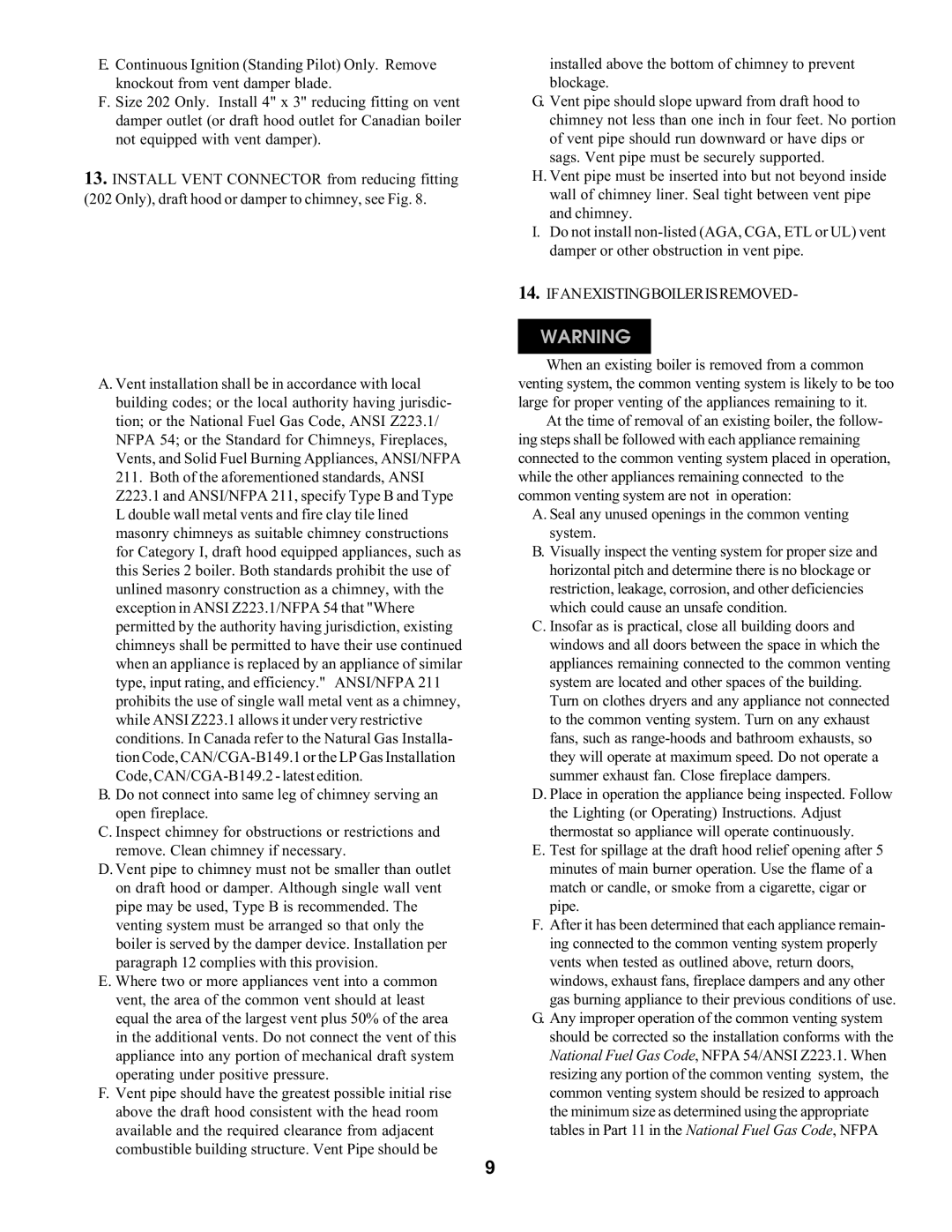SERIES 2 specifications
The Burnham SERIES 2 is a highly regarded addition to the lineup of residential and commercial heating systems, known for its efficiency, reliability, and innovative design. Designed with the user in mind, the SERIES 2 boasts a range of main features that cater to the needs of modern heating solutions.One of the standout characteristics of the Burnham SERIES 2 is its advanced cast iron construction. This material is renowned for its durability and excellent heat retention capabilities, ensuring that the system provides consistent warmth over extended periods. The cast iron heat exchanger allows for efficient heat transfer and maximizes energy output while minimizing heat loss.
Efficiency is a key focus for the Burnham SERIES 2, and it is designed to operate at high annual fuel utilization efficiency (AFUE) ratings. With its efficiency-enhancing features, including advanced combustion technology, the system helps homeowners save on energy costs while reducing their environmental footprint. The SERIES 2’s design helps ensure that a greater percentage of the fuel consumed is converted into usable heat, making it a smart choice for energy-conscious users.
Another significant feature is the versatile configuration options available with the Burnham SERIES 2. It can be installed in various settings, including basements, utility rooms, or even garages, due to its compact design. The system is compatible with multiple fuel types, allowing users to select between natural gas and propane to suit their specific preferences and availability.
The Burnham SERIES 2 also prioritizes ease of maintenance. Its user-friendly design includes access panels that simplify servicing and routine inspections. Additionally, it incorporates a range of safety features, such as an automatic shut-off system and built-in controls, to ensure safe operation.
In terms of technology, the SERIES 2 utilizes an innovative control system that optimizes heating cycles based on user demands and external conditions. This intelligent control enhances comfort and prevents excessive cycling, thereby prolonging the lifespan of the unit.
Overall, the Burnham SERIES 2 is distinguished by its robust construction, energy-efficient operation, versatility in installation, ease of maintenance, and advanced technology. For homeowners and businesses seeking a reliable heating solution, it represents a compelling choice, delivering warmth and comfort while remaining mindful of energy consumption and environmental impact.
